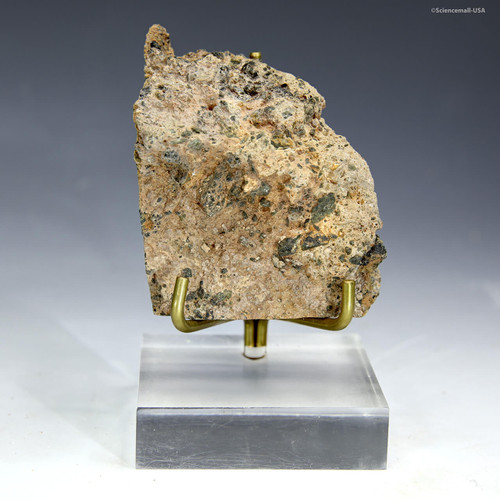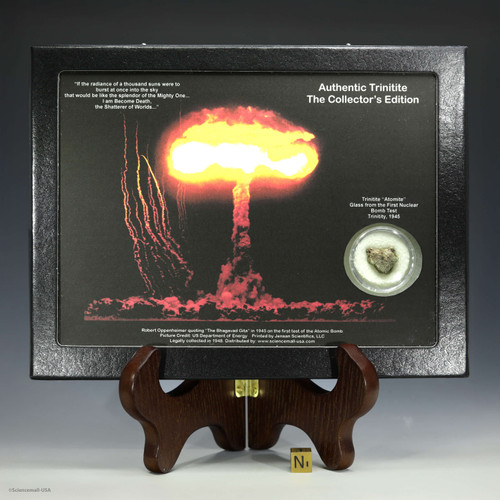Richat Structure -Eye of the Sahara - Riker Display
Brand : Sciencemall-USA
- SKU:
- JPT-11683
- Condition:
- New
- Availability:
- Usually ships in 24 hours.
- Weight:
- 2.00 LBS
- Minimum Purchase:
- 1 unit
- Maximum Purchase:
- 1 unit
- Gift wrapping:
- Options available
- Shipping:
- Calculated at Checkout
Explore the"Eye of the Sahara" Richat Structure
This rare volcanic breccia with lapilli from the collapsed magma dome. The Richat structure went through two different phases of collapse, and is one of Earth's most mysterious geological formations— which is also known as the Eye of the Sahara. Astronauts aboard NASA's Gemini 4 mission in 1965 first drew global attention to its enormous bull's-eye pattern while orbiting Earth. Visible even from space, this ringed formation stretches nearly 50 km (30 miles) across the western Sahara in Mauritania.
The structure's striking symmetry drew scientific curiosity and worldwide fascination as aerial and satellite imagery revealed its diverse geologic complexity.
Scientific and Educational Significance
Early hypotheses suggested an impact crater or volcanic caldera, but detailed geological mapping and radiometric studies proved otherwise. The Richat Structure is now known as a deeply eroded geological magmatic dome composed of concentric rings of Ordovician sandstones and Proterozoic quartzites uplifted by deep-seated forces and shaped by erosion. Hydrothermal alteration zones radiate outward, revealing evidence of ancient water-rock interaction.
Geological Context
The Richat Structure, or Eye of the Sahara, is a 40-kilometer-wide circular uplift in the Mauritanian desert. Once mistaken for an impact crater, it’s now understood to be a hydrothermally altered domal structure formed by intrusive magmatism and subsequent erosion. Volcanic breccias with lapilli represent pyroclastic or hydrothermal vent facies associated with late-stage alkaline intrusions. The lapilli and breccia textures are evidence of explosive degassing and collapse — possibly connected to the release of superheated groundwater through fractures as the dome cooled and decompressed.
What the Up-Close Image Reveals
This specimen of volcanic breccia with lapilli displays angular to sub-rounded fragments, or clasts, cemented by a lighter matrix—likely altered by hydrothermal fluids. The visible lapilli (pea-sized pyroclasts) indicate explosive volcanic activity, possibly from a phreatomagmatic eruption within the Richat Structure Complex.
Subtle hues ranging from pale tan to greenish gray suggest chloritized mafic material, feldspathic tuffs, and oxidized iron coatings- all signatures of breccias modified by hydrothermal circulation.
Specifications
- Riker case size: 8¼" L × 6¼" W× ⅞" D
- Specimen size: 26 mm H × 19 mm W × 4 mm D
- Disk size: 1¾" diameter × ½" D
- Display items: Certificate of Authenticity, information card, tag, and tag stand
- Image credit: NASA (Gemini 4 imagery)
- Note: Display stand and sizing cube not included.
Display and Presentation
This Eye of the Sahara collectible is professionally presented in a full-color Riker display case with a descriptive scientific label. It is ideal for:
- Geology and earth science collectors
- Science educators and institutions
- Meteorite and impact structure enthusiasts
- Curio and mini-museum displays
Distinctive Addition to Any Collection
Perfect for classrooms, home museums, or collector showcases, this Richat Structure breccia specimen provides a direct connection to Earth's ancient geological story. Own a tangible link to one of the planet's most studied and enigmatic landforms— available exclusively from Sciencemall-USA.








